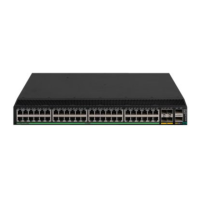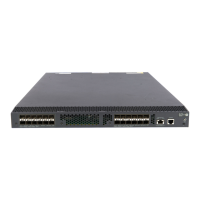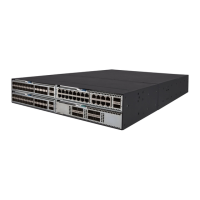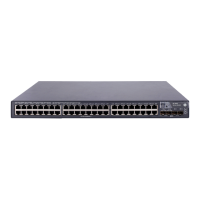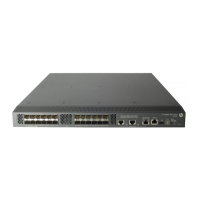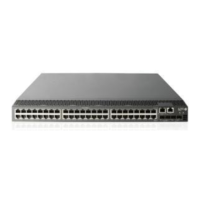24
Configuring priority mapping
Overview
When a packet arrives, depending on your configuration, a device assigns a set of QoS priority
parameters to the packet based on either a certain priority field carried in the packet or the port priority
of the incoming port. This process is called "priority mapping." During this process, the device can
modify the priority of the packet according to the priority mapping rules. The set of QoS priority
parameters decides the scheduling priority and forwarding priority of the packet.
Priority mapping is implemented with priority maps and involves priorities such as 802.11e priority,
802.1p priority, DSCP, IP precedence, local precedence, and drop priority.
Introduction to priorities
Priorities fall into the following types: priorities carried in packets, and priorities locally assigned for
scheduling only.
Packet-carried priorities include 802.1p priority, DSCP precedence, IP precedence, and EXP. These
priorities have global significance and affect the forwarding priority of packets across the network. For
more information about these priorities, see "Appendix."
Locally assigned priorities only have local significance. They are assigned by the device only for
scheduling. These priorities include the local precedence, drop priority, and user priority, as follows:
• Local precedence—Used for queuing. A local precedence value corresponds to an output queue. A
packet with higher local precedence is assigned to a higher priority output queue to be
preferentially scheduled.
• Drop priority—Used for making packet drop decisions. Packets with the highest drop priority are
dropped preferentially.
Priority maps
Priority mapping is implemented with priority mapping tables. By looking up a priority mapping table,
the device determines which priority value is to assign to a packet for subsequent packet processing. The
switch provides the following priority mapping tables:
• dot1p-dp—802.1p-to-drop priority mapping table.
• dot1p-lp—802.1p-to-local priority mapping table.
• dscp-dot1p—DSCP-to-802.1p priority mapping table, which is applicable to only IP packets.
• dscp-dp—DSCP-to-drop priority mapping table, which is applicable to only IP packets.
• dscp-dscp—DSCP-to-DSCP priority mapping table, which is applicable to only IP packets.
The default priority maps (as shown in Appendix A Default priority maps) ar
e available for priority
mapping. They are adequate in most cases. If a default priority map cannot meet your requirements, you
can modify the priority map as required.

